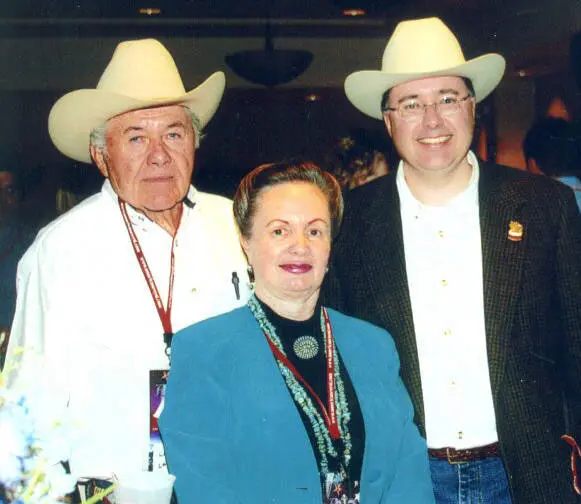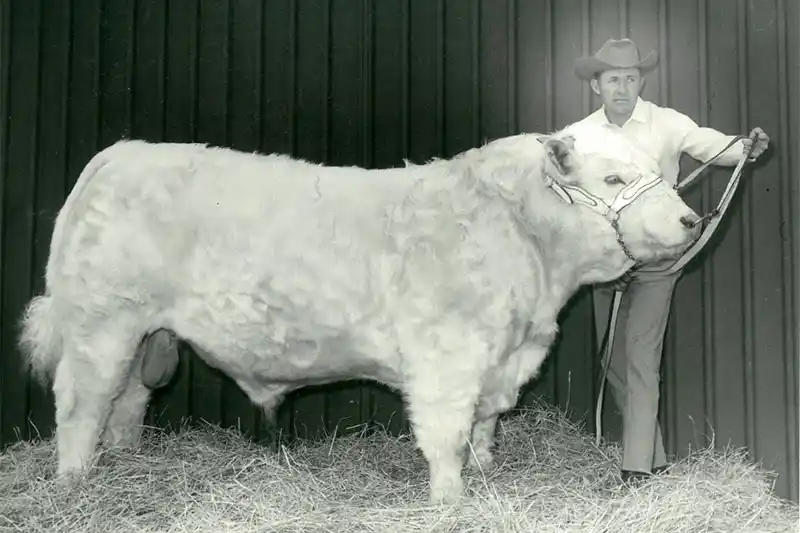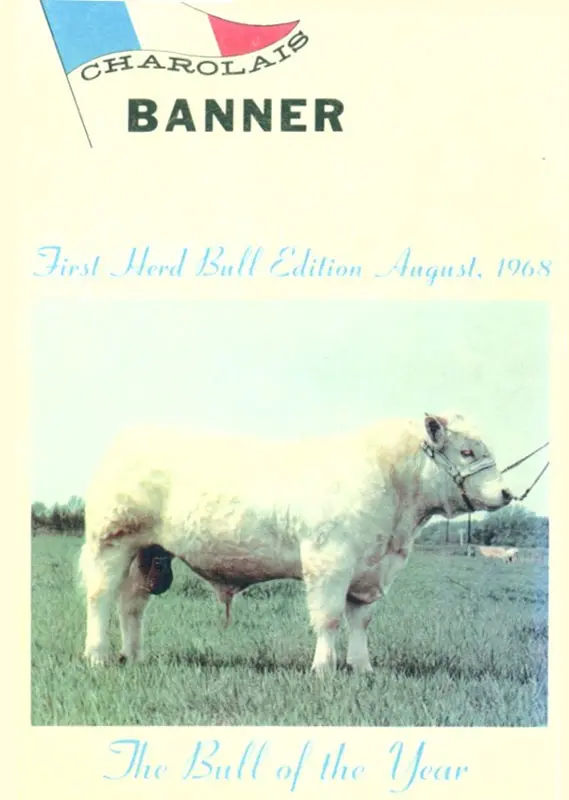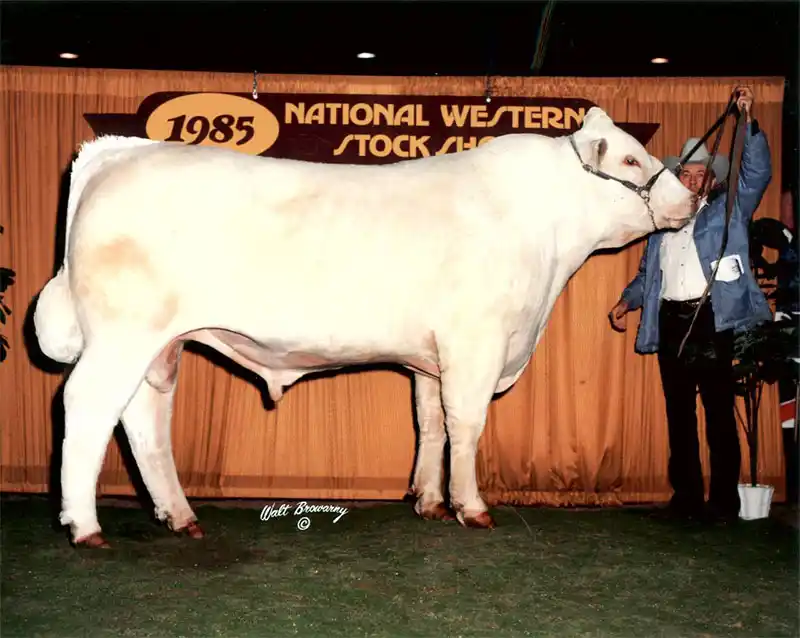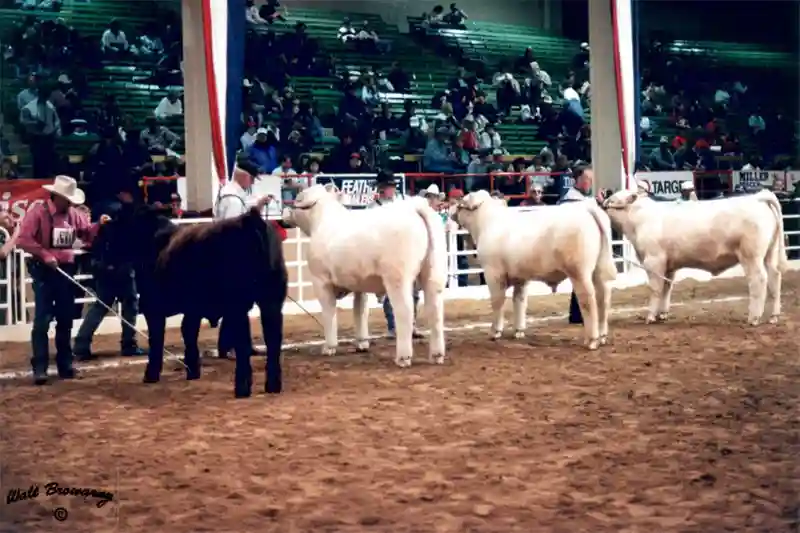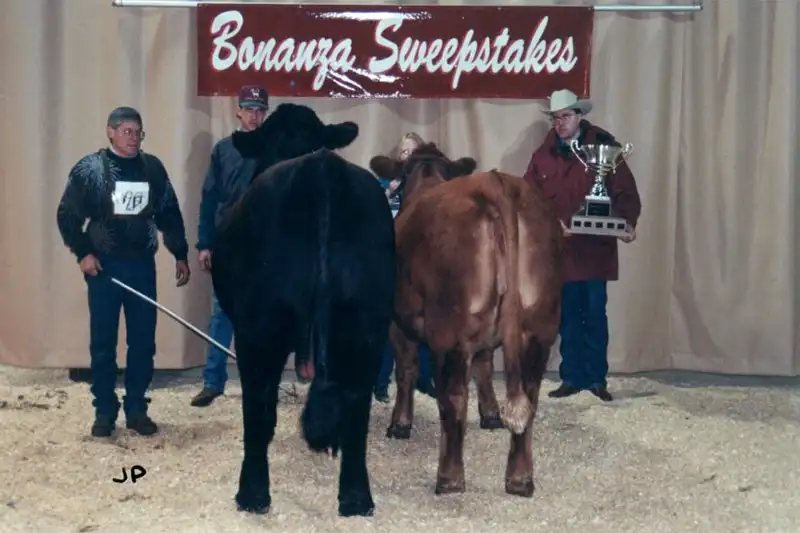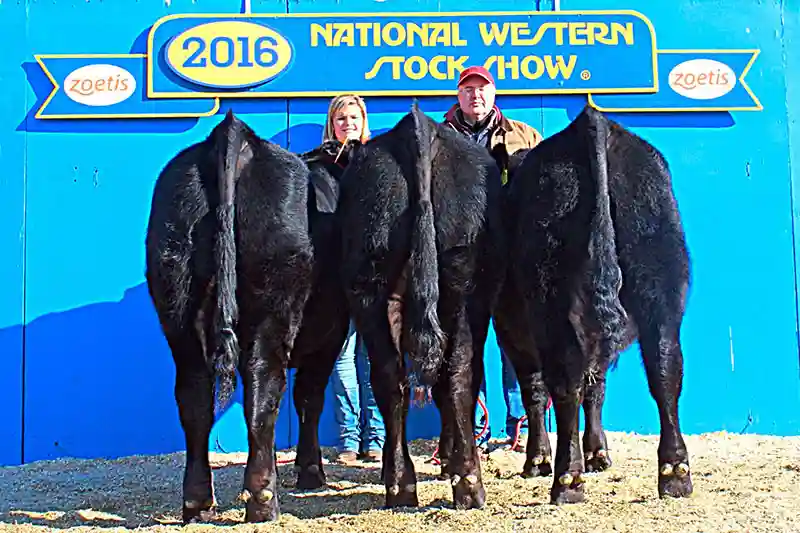By the late 1980s, the Laue cattle had been marketed to customers in more than half of the states of the United States, as well as Canada and Mexico. Laue bulls were popular with farmers and ranchers — in some cases, bull buyers were the grandchildren of original customers from the early years. We began to notice that some customers who saved heifers over several generations were looking to other breeds to diversify their increasingly white-colored commercial cowherds.
To maintain those customer relationships, we investigated the feasibility of adding other breeds to the Laue program. A few Angus cattle were even purchased. At about the same time, Brant Laue attended the Canadian Charolais events at the Calgary Stampede — the same spot that had launched the Beau Ivo story for the Laues 25 years earlier. In Calgary, Brant learned that several Canadian breeders had been selectively mating off-white or tan animals to develop a strain of “Red Factor'' cattle within the Charolais breed. It had reached the point that some of these cattle were dark red — even a black heifer calf had been reported. The opportunity to diversify color without changing breeds seemed like a ready-made answer to the market trends we had observed.
The first Red Factor cattle arrived at the Laue Ranch from Canada in 1994. They were joined by other good cows selected from U.S. herds, quite often with the seller commenting that “I just never could get her to have a white calf.” Semen on Canadian bulls was used, along with embryo transfer, to accelerate the genetics. Some in the breed were disturbed by these developments, and controversy erupted. Back in Canada, that black heifer calf turned out to be true, and we bought the first pair of embryos for $29,000, along with our Canadian partners. One of those embryos was “Doctor Joe” — a name that successfully poked fun at the controversy and one of its personalities.
Common sense prevailed, and those disagreements were ultimately resolved. “Doc Joe” became a celebrity in our Denver Stock Show displays, and he predictably made waves when he appeared in the arena with a group of white bulls. The world’s first all-Red Charolais show was held in Red Deer, Alberta, Canada in 1996. Laue cattle won several championships, along with the prestigious Breeders Cup for the best two head. In 2001, Lester and Brant Laue returned to judge the show.
Our experiences with the Red Charolais have mirrored those of our Canadian colleagues — commercial breeders are intrigued by the option, and the cattle seem to become darker with each generation. A second black female appeared in Canada in 1996, and she produced a black son by Doctor Joe. We acquired this bull, Eclipse, and in 2000 he became the first black Charolais bull in the United States. His 2001 calf crop included the first black bull and heifer to be born in the U.S., both out of females raised on the ranch and from American cow families. The bull calf, LCL Gus — named for Lester’s favorite character in the TV western “Lonesome Dove” — has developed into a very impressive herd sire in his own right. The Red and Black Charolais story at Laue Ranch represents history in the making.
